A Brief History of the Porsche 930 Flachbau, AKA the Slant Nose Porsche
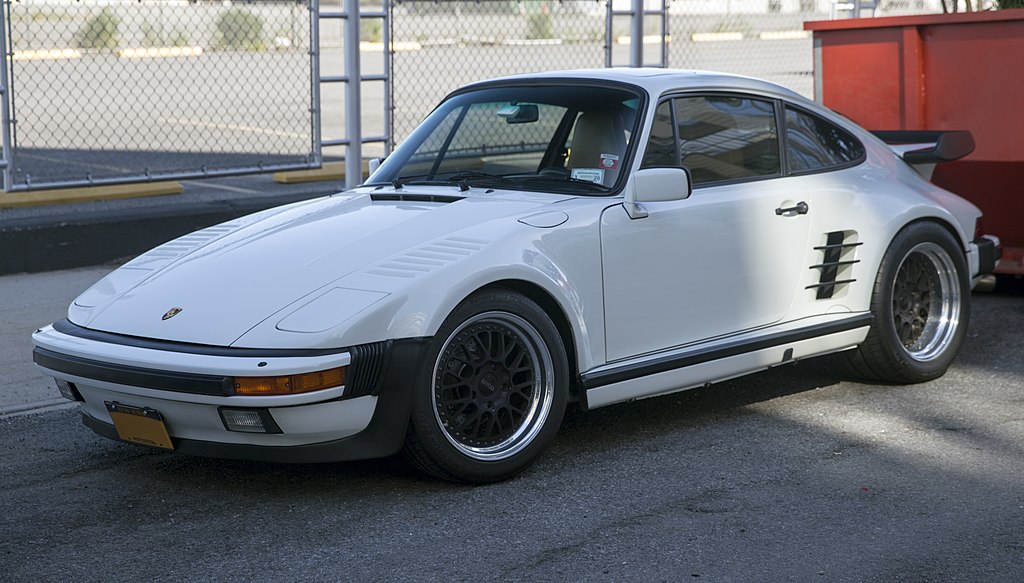
The Porsche 930 slant noses were inspired by the automaker’s 935 race cars at the 24 Hours of Le Mans. German automotive engineer Norbert Singer incorporated a “Flachbau” flat front design for improved aerodynamics and to reduce drag. He eschewed the 911’s upright front fenders for a flatter design that sloped from the windshield to the nose of the vehicle, according to Total911.
After Porsches with the flat, a.k.a. slant noses, appeared on the racetrack, it was just a matter of time before the design made its way to the showroom floor. One particular Porsche enthusiast/racing sponsor allegedly asked the automaker’s special wishes department for a street 935 factory model, and the one-off 911 was so popular, others wanted them too. Requests were made through the “Sonderwunschen” or Special Order program, later known as Porsche’s Exclusive Program, according to the Beverly Hills Car Club.
Between 1982 and 1989, Porsche produced three generations of the 911 Turbo S with slant nose bodywork.
Only 948 of these cars were released, making them one of the automaker’s most unique models.
The slant nose Porsche was very distinct in its styling. The first generation (1982-83) included just 58 vehicles with a “hammerhead” front nose with the headlamps in the bumper area. Later generations featured flip-up headlights.
Demand was so high for these models, Porsche couldn’t handle all the requests to build them. The automaker then sold the parts to customers, and dealerships would install them.
The slant nose Porsche is synonymous with 1980s car culture. Its highly recognizable sloping style combined with a wide body and whale tail are indicative of the era. It possesses “even more quintessential a 1980s look than that of the Lamborghini Countach and Ferrari Testarossa. And it oozes real racing pedigree: a great car to look at, let alone to drive,” the Beverly Hills Car Club enthuses.
Porsche produced 204 second-generation slant nose models from 1983-1987. The third generation (686 cars) included options that were imported to the United States. According to records, 609 U.S.-spec cars came from Stuttgart, and 21 were likely built from factory-supplied kits, according to 911Flachblau.
Fitting the 930s with the slant nose was a pricey option, beginning at approximately $29,000, which added almost half to the standard Turbo’s price. That didn’t deter interested buyers. Porschephiles loved (and still love) the slant nose. It did not take long before tuners such as Kremer and Ekkehard Zimmerman made slant nose conversions out of stock 930 Turbos by replacing the front fenders with the sloping nose and pop-up headlights. They also featured cooling slats in homage to the 935 race car. If you see a slant nose model on the road today, there’s a good chance it’s a modified version and not original from the factory.

Tesla’s ‘Dog Mode’ Will Keep Pets Cool, Reassure Passersby
A parent’s worst nightmare is accidentally leaving a child in the car on a hot day. Hot cars are also a concern for pet owners, who want to make sure their animals are protected if they have to run a quick errand during a sweltering summer afternoon.
Back in 2016, Tesla launched the Cabin Overheat Protection feature addressing child and pet safety needs. Elecktrek noted the carmaker’s description of the software: “In an industry-first safety measure, we’re also introducing Cabin Overheat Protect, focused on child (and pet) safety. This feature keeps the car at a safe temperature for hours, even when the car is off. This feature is only made possible by an electric vehicle with Tesla’s uniquely large battery packs.”
An owner of a Model 3 recently recommended the automaker develop a “dog mode” to make sure dogs are safe and cool inside the car, and CEO Elon Musk listened.
Twitter user Josh Atchley suggested, “Can you put a dog mode on the Tesla Model 3. Where the music plays and the ac is on, with a display on a screen saying ‘I’m fine my owner will be right back’?”
Musk replied, “Yes.”
Tesla owners can keep the air conditioning on when they leave a car, but some passersby may still get worried if they see a pet locked inside. Atchley came up with the idea to put a message on the center screen to placate those who notice a dog curled up in the front seat.
Another Twitter user recommended making the inside temperature visible to those outside the vehicle. Musk responded, “Exactly.”
The move will make both owners and pet lovers feel much more comfortable when man’s best friend is confined to a vehicle even if the temperature is high.
It’s unclear when this feature will be made available to customers. But Musk has been open to ideas from Tesla owners who have suggested improvements, including a “fade mode” for the version 9 software update. This will enable drivers to black out their screens and only display essential items, such as speed.

Ford’s Patent For A Motorcycle/Car Hybrid Is Ridiculously Awesome
Remember the motorcycle that came out of Batman’s Tumbler in The Dark Knight? The technology may soon be a reality.
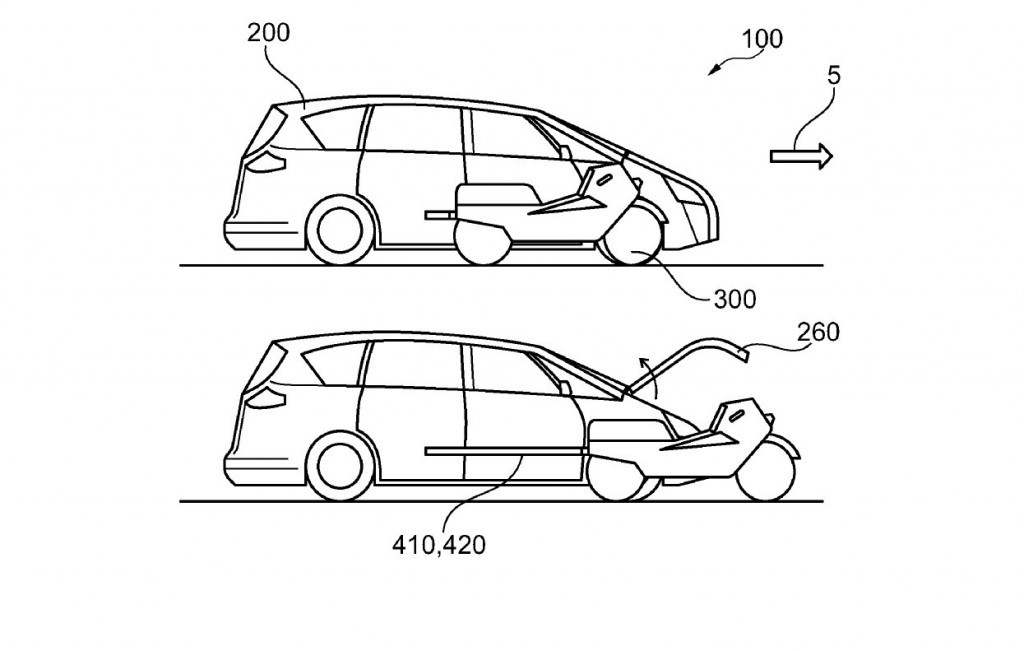
While Ford Motor Co. is stopping production on its passenger cars, it appears the automaker is designing other types of vehicles. The company recently filed a patent for what it dubs a “multimodal transportation apparatus.” What is it? A passenger car equipped with a detachable motorcycle.
Specifically, the apparatus “contains a motorcycle that is equipped with, and can be driven by an electric motor and a securing apparatus to releasably fixedly secure the motorcycle to the passenger car.”
The motorcycle is affixed to the front of the car: “The motorcycle is arranged between a driver seat and a passenger seat, as seen in a direction of travel, in a secured operating state. At least a portion of a centre console serves to support at least one body part of a rider of the motorcycle in an operating state, wherein the motorcycle is detached from the passenger car.”
Both the motorcycle and the car can be operated separately. The motorcycle’s battery will be wired into the passenger car, which is a hybrid-electric vehicle.
Why would somebody want or need such a vehicle? It may be useful in cities where driving and parking is restricted. You could park outside city limits, detach the motorcycle, and ride to your destination. In addition, future regulations may ban internal combustion engines in urban areas, so hybrid vehicles with an integrated electric motorcycle could be a good solution.
Ford’s patent was published on April 26, 2018, 18 months after it was submitted to the U.S. Patent and Trademark Office. It’s merely a patent, so the project may never make its way into production.
There are other options that are currently available for those interested in unusual vehicles. The open-air roadster Polaris Slingshot is a three-wheeled motorcycle. It’s a cross between a convertible and sportbike. The Can-Am Spyder is another three-wheeled motorcycle that seats up to three people. For those looking for an electric option, Campagna Motors is working on an all-electric T-REX three-wheeler prototype.
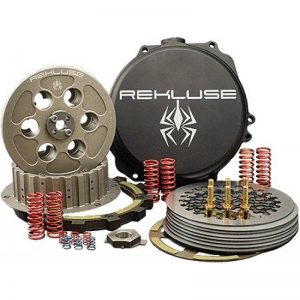
The Rekluse Auto Clutch – A Boon for Dirt Bikers But Beneficial for First-Time Street Riders Too?
Rekluse produces three automatic clutches with anti-stall technology for dirt bikes, adventure bikes, ATVs, and even Harleys. The company, which was founded in 2002, claims the anti-stall technology gives riders a performance advantage.
These clutches automatically engage and disengage the clutch without the need of a clutch lever. You simply shift into gear and twist the throttle. You don’t need to feed out the clutch lever when starting from a stop, but you still have to shift. However, you can still use the clutch lever and manually modulate the clutch if preferred.
How does it work? As the RPM increases, wedges in the clutch slide out, the disc expands, and the clutch engages. After reaching an idle speed, the wedges retract, the disc contracts, and the clutch disengages. Stalling is “virtually impossible,” according to Rekluse. This technology is primarily geared towards dirt bikers. You don’t stall your bike because the clutch slips at low RPMs and engages at higher RPMs. If you’re in second gear and completely lock the brakes, it doesn’t stall. When you drop your bike, it keeps running, which means you don’t have to kick over a hot bike. The automatic clutch offers low-speed maneuverability, allows you to take corners in a higher gear, and gives you a quicker start from a stop.
Orlando, Fla.-based dirt bike racer Don Chriss, who has been doing hare scrambles and enduro racing for 20 years, is sponsored by Rekluse and has been using the technology for 15 years. He rides a 2016 KTM 350 XCF and a 2016 KTM 250 XCF and loves the performance edge he gets from it: “Their EXP clutch is just like your regular clutch. The feel’s the same. Everything’s the same, so if you want to use your clutch you use it. The only time you realize that you have a Rekluse is when you hit the back brake and it doesn’t stall. It’s a beautiful thing, especially at the end of the race when your hand’s tired and you don’t want to pull in the clutch.”
While there are many advantages to an automatic clutch, it’s not perfect. You can’t bump start on the go like you can with a standard clutch. You have to make an adjustment to the Rekluse first and then adjust it again after you get the bike running. Also, when the motor is turned off, the motorcycle acts like it’s in neutral. So, if you’re going down a hill, you can’t slow down using the engine. Chriss conceded that is one of the problems with the Rekluse. He noted, “The only downfall is going downhill. You don’t have the engine braking, so that’s the only issue, but here in Florida we don’t have a lot of hills, so it’s not a problem…I’m trying to be on the gas anyway when going down a hill.”
Another potential negative is that inexperienced motorcyclists who use a Rekluse may ride in a gear that’s too high and burn up the clutch.
There has been some stigma attached to automatic clutches. Some think it’s cheating to use one and that better riders use a standard clutch. Proponents say an automatic clutch gives the rider less to think about and more time to focus on other things. While some riders are slow to embrace this technology, others see it as a way to boost performance.
Veteran motocross racer Mike Groland from Jacksonville, Fla., tested one out and can see the appeal for woods riders. “There are good things and bad things about the Rekluse clutch. It definitely comes down to preference, depending on your style of riding,” he explained. “The woods riders love them, and especially a little bit older woods riders like them. You can come to a complete stop on one and without engaging the clutch, the bike won’t stall out on you. A novice rider or someone that gets fatigued easily is going to enjoy that Rekluse clutch.”
But he doesn’t use one. “For me, I felt like it took some of the hit out of the power band,” he noted. “It gives you the illusion of slipping a clutch and you’re not wanting it to.”
However, many pro racers like automatic clutches because it’s one less thing they have to worry about and they can concentrate on other things, such as improving their time.
In 2016, Rekluse announced the release of its semi-automatic clutch for Harley Davidson Sportsters (and manufacturers such as Honda currently offer a dual clutch transmission on certain models). The auto clutch may be beneficial to new riders who have little to no experience using a clutch (how many millennials do you know who drive a manual transmission?) With a Rekluse installed on your street bike, you can sit at a stop light in first gear without holding in the clutch lever. When the light turns green, you simply twist the throttle and go. You can even start in second gear without any lag or jerking.
Rekluse noted in a press release: “EXP clutch systems are designed to centrifugally engage and disengage the clutch as a rider takes off or comes to a stop. This feature allows riders to focus on riding without the potential for stalling while enhancing the overall riding experience and performance of the clutch.”
Ilia Athan, a biker from New Haven, CT, with a 2005 Road King, has exclusively owned Harleys for the past 40 years. He believes using the clutch lever is part of the riding experience, and it’s something he never plans on giving up. Nevertheless, if having a semi-automatic clutch helps a new rider get on a motorcycle for the first time, he’s all for it. Athan said, “There are lots of people out there that are afraid to [learn how to shift using a clutch] and don’t feel they have the coordination or skill to do something like that…maybe they just don’t have the confidence to venture out and find out if they do. For them, by all means, get it and enjoy the ride.”
While Rekluse has a lot of fans in the dirt bike community, it may take some time to gain traction among street riders. First-time motorcyclists who are unsure about their skills could benefit from the anti-stall technology, as long as they also learn clutch control without the aid of a “cheater” device. Most riders agree that the Rekluse can enhance your riding experience, but it doesn’t replace old-fashioned practice, either on the dirt or on the road.
If installed correctly, the Rekluse is said to last longer than a traditional clutch, and it doesn’t require modification of existing clutch parts. The company also offers two manual clutches.
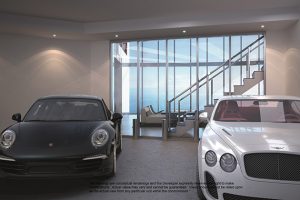
Would you park your Porsche in the living room?
I only just heard about the Porsche Design Tower in Miami. Since I’m not a millionaire, the brand-new, luxury high-rise apartment building escaped my attention.
The tower in Sunny Isles opened early last year and features three glass elevators (called Dezervators) that take residents and their exotic cars into any of the building’s 132 units. Owners can park two to four vehicles adjacent to their apartments or even inside of them. Why leave your Porsche in a parking garage several stories below when you can take it with you upstairs?
Occupants also have access to a concierge who washes the vehicles and performs basic maintenance, such as tire rotation. If he does oil changes, too, I’m in.
I try to imagine what it would be like to own one of these exclusive beachside units. I would love to have my 1976 911S share an apartment in the sky — not only with me, but literally next to me.
But there would be some issues. While most of the residents at the tower likely have new and classic cars that are in tip-top shape, my Porsche is a work in progress. Lovingly named Smokey due to an incident that occurred several years ago, my 911 would require some extra care. I’m not sure the duties would coincide with the car concierge’s responsibilities.
I keep cardboard under Smokey’s engine throughout the year to soak up the oil that leaks regularly. While my garage floor isn’t perfect, I don’t want it saturated with fluids. When there was a significant gas smell in our garage last fall, Smokey, along with my Harley Davidson, were immediate suspects. Fortunately, it was just the snow blower.
I keep a fire extinguisher in Smokey because, honestly, you never know. I cleared up a wiring issue a couple years ago, but I wouldn’t be shocked if I turned the key some day and smoke started coming out of the dashboard (again).
While I can quickly drive my Porsche out of the garage if it generates a small fire, who’s to say what would happen if it was stored several stories high? Perhaps the tower features extra safety regulations since vehicles full of flammable substances are housed directly next to and inside the units.
It’s difficult to imagine the residents of the tower parking their Porsches, Ferraris and other luxury vehicles on top of cardboard in their pristine garages and living rooms. It would distract from the design. Their vehicles should look and sound like they’re in mint condition.
The key to keeping Smokey in good running condition is to drive him frequently. With the Porsche Design Tower, you just exit your apartment, drive your car into the elevator, and hit the town. It sounds easy enough.
Alas, the “cheapest” unit goes for $6 million and is a bit cost-prohibitive to most people. Every unit includes floor-to-ceiling windows, a balcony with a private swimming pool and views of the Atlantic Ocean.
The penthouse on the 60th floor was initially listed at $32.5 million and allows enthusiasts to drive their cars directly into the living room. It features two sky garages and a separate 3,000-square-foot car gallery. Imagine the Porsches you could display in a spot like that.
I can’t park my car in the living room at my house. Smokey wouldn’t fit through the front door, and I’d have to drive over the lawn and up the porch to get him inside. Yet there’s something compelling about the idea, and my significant other would consent if there was space (and we could rotate vehicles to feature his classic cars as well).
Would you park your car in your house?
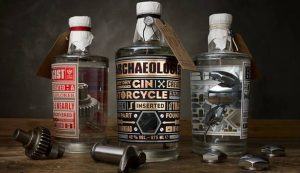
Gin Infused with Vintage Harley-Davidson Engine Parts Honors the Spirit of the Past
There’s a man from Hamburg, Germany, who became “infected” with the Harley-Davidson virus when he was a teenager. Many bikers can identify with that sentiment. The “virus” can strike when you’re young and see a motorcycle for the first time or later in life when you finally have enough money to buy your dream bike.
For Uwe Ehinger, the sickness compelled him to search high and low—in junkyards, people’s garages, and anywhere else he could find lost motorcycles—for Harley castoffs. What others considered junk, he saw as treasure. He started collecting these “relics” and became a motorcycle archaeologist. And what did he do with these old Harley-Davidson parts that no one else wanted? He built his own bikes and custom bike shop, Ehinger Kraftrad. Then in summer 2017 he used them to make gin. And it’s not supermarket gin—it’s top-shelf liquor.
Ehinger explains on his website, www.the-archaeologist.com, “Every time I make a find of rare bikes, I wonder how to use every single part–because they deserve to be preserved. That is where the idea for ‘The Archaeologist’ emerged: preserving the spirit of the old machines in an actual spirit and make it possible to experience the taste.”
Heck, yeah!
He offers three kinds of gin, lovingly named The Flathead, The Knuklehead and The Panhead. The premium dry gin contains actual engine parts from Harley-Davidsons. It is safe to drink because all of the parts are washed and sealed in a tin alloy. The gin contains camshafts from a 1939 Flathead, screw-nuts from a 1947 Knuklehead, and rocker arms from a 1962 Panhead. Even the labels have a vintage feel—they were printed on a 1931 Heidelberg Tiegel printing press. The bottles themselves are wrapped in paper that describes the origin of the bike parts inside.
Ehinger’s obsession has taken him all the way to South America and South Korea to find motorcycles that need saving. He has been hunting them down for decades. In the 1980s, he scored several 1939 Flatheads while combing through a garage that stored decommissioned bikes formerly used by the Mexican military. While traveling through Santiago, Chile, he found a rare, blue 1947 HD FL. The coolest part? It was previously owned by a German pharmacist who used it to deliver his prescriptions. In South Korea, he found a meticulously organized motorcycle graveyard filled with unwanted bikes, including a 1962 Panhead.
The price of the gin is a little steep. Bottles cost between $1,000 and $1,280. The gin is so popular, the limited run sold out online within hours of its release. If you’re still interested, the company is taking advance orders for the next edition.
Stud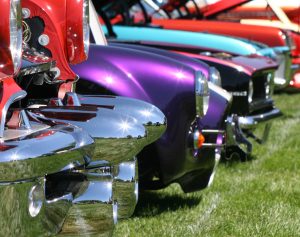 y: Gender Dictates Which Car Color You Choose
y: Gender Dictates Which Car Color You Choose
Sept. 2, 2017
A new study shows that men and women have very different preferences when it comes to picking out a colour for their new car. The number-one choice for men? Yellow. Women, conversely, prefer teal.
The 2016 Car Color Preferences by Gender Study reveals that the top three colours favored by men are yellow (33.9 percent), orange (32.6 percent) and black (14.2 percent). The women’s top three choices are teal (19 percent), gold (14.5 percent), and silver (9.7). While men are increasingly choosing yellow and orange vehicles, their preference for red has dropped.
Phong Ly, CEO of iSeeCars.com, explained, “Men and women don’t just like different colours. Our research shows men’s preferences are much stronger than women’s, and the top colour choices for both of them have actually grown to the highest percentages we’ve seen in four years.”
Men are also much more interested in pickup trucks than women—their preference for this body style is over 200 percent higher than it is for the opposite sex. Men also like convertibles and coupes, while women are more interested in SUVs and minivans. There’s also a correlation between body style and color, noted Ly. Pickup trucks and sports cars have a high percentage of brown and yellow/orange options, while SUVs and minivans contain more teal and gold cars than other body styles do.
In other words, men like “sporty and flashy” vehicles, while women would rather own a practical mode of transportation. In 2016, 13.9 percent of all yellow cars were convertibles, which made up 1.9 percent of all cars. Only 3.7 percent of cars on the market were minivans; however, 7.8 percent of all teal cars were minivans.
A male or female’s car choice—sporty vs. reasonable—also affects the bottom line. Used sports cars, painted the colours men prefer, typically cost around $18,196. Used cars in colours that women like cost around $14,938.
Ly explained, “If you compare prices for pre-owned cars, the average price for men’s favorite colours is 22 percent more expensive than women’s favorite colours. That number jumps to 86 percent when you look at the first-ranked colours: yellow and teal.”
Research like this can benefit car manufacturers, who can market colour choices based on what men and women like. iSeeCars.com came to its conclusions by examining 700,000 consumer inquiries and 30 million car sales.
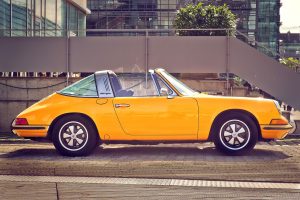 10 Porsche Instagram accounts you have to follow
10 Porsche Instagram accounts you have to follow
May 2, 2017
There are hundreds of great Porsche pages to follow on Instagram, so it’s difficult to narrow down the best of the best.
Here are just a few favorites based on the number of followers, their incredible images and the soul held within.
1. Magnus Walker
378,000 followers
You likely know British-born customizer Magnus Walker by his dreadlocks. The self-proclaimed “Urban Outlaw” turned his Porsche hobby into a successful business based in Los Angeles, and he has become one of the world’s leading collectors and modifiers of Porsche 911s. His motto is “Get out and drive,” and he urges followers to stay motivated and never give up.
His Instagram page includes random travel photos and art as well as advice. When asked recently which 911 would be an affordable one to fix up, he answered, “Air cooled 74-89.” That makes this writer, the owner of a 1976 911S, quite happy.
2. Singer Vehicle Design
333,000 followers
This is the official account for Singer Vehicle Design and includes the tagline: The Porsche 911 Restored | Reimagined | Reborn. The company was founded in 2009, and its focus (i.e., obsession) is “the development of a meticulously restored and optimized air-cooled 911.”
A recent image reveals the inside of a commission from New Jersey that features a busy black-and-white design on the seats, doors and dashboard — a controversial design. One commenter noted, “Houndstooth fabric and Porsche go back 60 years and will never go out of Style,” while another called it “epilepsy inducing.”
In another interior shot of a different commission, one Instagrammer noted, “Could look at all the details for days, without getting bored.” We agree. But take heed — you may spend a lot of time on this page.
3. Porsche
7.1 million followers
The official account for Porsche Cars North America has more than 7 million followers, and your car can be featured on its page by tagging your shots #PorscheMoment.
A recent photo includes a red 911 Carerra GTS with the caption, “It doesn’t matter where you’re going. Only that you are.” While the page is updated less frequently than some of the others, it includes racing pics and new vehicles such as the 2017 Porsche 919 Hybrid, which was “developed to follow in the steps of its Le Mans winning predecessor.”
4. Porsche 356 Registry
7,000 followers
This is the official account of the Porsche 356 Registry. Users are encouraged to submit their original photos to be featured on the page.
There’s a “gorgeous shot” of a red 356 nestled in front of blooming daffodils, a blue 1965 Porsche 356 SC Cabriolet pictured in front of the ocean, and 1959 Convertible D just chilling in a garage.
5. Porsche Collector
177,000 followers
Porsche_collector is what it says. Captions are short and sweet, but the images speak for themselves.
Often, users are asked their opinions about the vehicles, such as, “Porsche 997 retro look, Yes or No?” or “Porsche 997 slant nose!! Yes or No?” Many of the shots are street sightings and photos collected from other profile pages.
6. Porsche Club
290,000 followers
Porscheclub (not affiliated with the Porsche Club of America) reposts images from Instagram, compiling all the good stuff in one spot. Pictures include a dynamic Porsche 918 Spyder by photographer Tom Koenig, an arena red 911 Targa by euroclassics.porsche, and a pretty yellow Cayman GT4 by jhollandcars.
7. 911 Legends Never Die
148,000 followers
This page, based out of Germany, is an online magazine/platform for all the “legends of automotive history.” A typical shot shows 19 Porsche 918 Spyders on their way through the Alps, a 911 pulling a camper and an interesting fuchsia GT3 RS.
8. Cult 911 / Porsche Art Daily
155,000 followers
Based out of London, porscheartdaily is a “celebration of worldwide, modern day Porsche culture.” It’s all about the eye candy.
Some recent images show a Viper Green 997 GT3 RS, a sleek black 993 for #turbotuesday, a “gorgeous IROC inspired build,” a legendary capture of the 74 RSR by UK Automotive Photographer Peter Aylward, and even a stunning pic of a 356 shot in the British countryside.
9. Porsche Targa
16,300 followers
Porsche.targa is a fan page for the Porsche 911 Targa and features both vintage and newer models. Each shot is often accompanied by a famous quote, such as: “The soul that sees #beauty may sometimes walk alone. – #JohannWolfgangvonGoethe – .”
10. Porsche 944 Club
3,400 followers
Porsche_944club boasts of sharing its passion “for the most underrated Porsche of all time.” It has a small but loyal following of enthusiasts who appreciate a vehicle that not everybody understands.
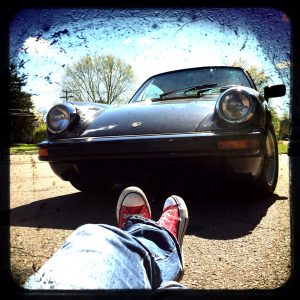 Defying the Porsche owner stereotype
Defying the Porsche owner stereotype
I met a German several years ago who told me that only dentists rode Harley Davidsons in his country. I laughed, knowing full well that everyone from outlaw bikers to weekend warriors rides them in the United States.
Presumably, the high cost of importing the motorcycles from America to Europe meant only professionals could afford them. The same stereotype is often applied to Porsche ownership — only the affluent drive them.
Last year, my brother joked about the middle-aged “wine and cheese” crowd who get together for monthly Porsche Club of America meetings. That was before he bought one himself (more on that later).
And it’s true that many believe Porsches are cost prohibitive for the average person. They believe men of a certain age or those who like watching themselves drive by in the reflections of storefronts are most likely to drive them.
But anyone entrenched in Porsche culture knows the not-so-secret truth. There are plenty of entry-level Porsches that can be purchased without digging too deep into your pocket — a topic that’s been discussed in this very forum.
As for the drivers, we’re a diverse crew. As a woman, I’m certainly not the exception to the rule. There are plenty of ladies who own Porsches, including Dr. Julie Komarow, who — as featured in the latest issue of Panorama — “drives her 911 to the hospital, races it and uses it to pick up sacks of llama food.” Yes, this Porsche owner has the stereotypical “Dr.” preceding her name, but Komarow is far from typical.
I’m an entertainment journalist by day and a martial arts instructor by night, but I don’t drive to movie premieres in a 911 Carrera Turbo S. I have Smokey, a 1976 911S, and if it’s the only Porsche I ever own, that’s fine by me.
My Porsche is a little rough around the edges, but that’s what I love about it. It’s the imperfections, the scars of a life well lived, that connect Smokey and me.
Porsche ownership is sexy. People who drive them are just a little bit cooler than everyone else. This is certainly not limited to thinning-haired doctors and lawyers looking for a status symbol. Porsche ownership is for enthusiasts. It’s for people who enjoy the ride, regardless of the price tag.
Now back to my brother. A diehard BMW driver, he recently purchased a 1987 924S. To quote his email from October: “Called the seller and left a message. I am smitten!”
My brother, who happens to be middle-aged, is a long-haired, leather jacket-wearing bass player who would never be confused for a doctor or dentist. He bought the car because he likes it, not because he’s going through a mid-life crisis and not because he wants to project a certain image.
People own Porsches for all different kinds of reasons. They like racing them. They like showing them off at the concourse. They like the way they look and feel. Obviously, that sort of love for a vehicle can be shared by all kinds of people — writers, musicians, doctors, rock stars and backyard enthusiasts.
Porsche owners are not all the same. We’re a diverse group of people whose mutual affection for a cool little German sports car happens to put us on common ground.
